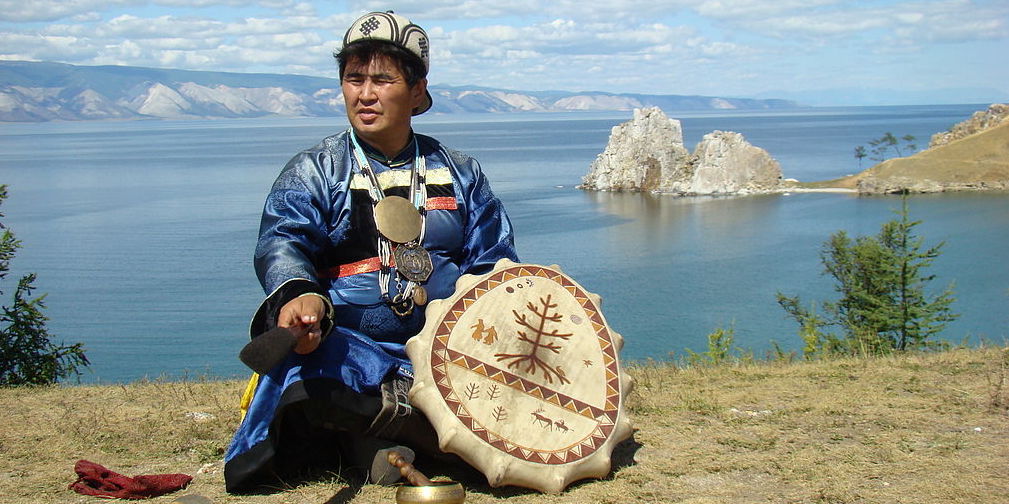Shamanism
The term ‘shaman’ originated in indigenous communities of Siberia, referring to individuals singled out as uniquely capable of using ritual to bridge the human and spirit worlds. It is now used much more broadly to refer to figures of spiritual importance in indigenous communities worldwide.

Buryat shaman on Oikhon Island, Siberia. Image credit: Arkady Zarubin.

Yanomami shamans inhaling a hallucinogenic snuff called yakoana. Through their trance-like visions, they meet the spirits or xapiripë.
© Claudia Andujar/Survival.
All forms of shamanism view anomalous experiences – like hearing voices or seeing visions – positively. In some communities, these experiences are accepted as evidence of being ‘called by the spirits’ to become a shaman.
- Hearing voices in shamanism is not usually seen as a problem, but may even be desired
- Shamanic societies have produced various techniques for producing voices and visions. Fasting, sensory deprivation, and using hallucinogenic substances (ayahuasca, mescaline cactus, and psilocybin mushrooms) are the most common.
- The Jivaro of western Amazon
believe that voices are communications from ancestors, plant, animal or evil spirits. Shamanic initiation entails learning to tell the difference between these experiences. - Among the Yanomami of Brazil, the shaman must undergo a long initiation in which voices and visions are induced to help foster personal and meaningful relationships with spirits, in the hope that the spirits will become allies.
In recent years, research into the potential benefits of using hallucinogenic substances has increased. Some researchers insist that elements of traditional shamanic ritual settings are crucial to any hoped-for benefit of using these substances. Others suggest that hallucinogenic substances may be used in ‘micro-doses’ to help with psychological distress or to ease one’s journey through a spiritual crisis. It is important to note that in most Western countries, hallucinogenic substances are still illegal, and it can be dangerous to experiment with them.
Find out more
Read
David Wilson (2014). Spiritualism and Shamanism. The Religious Studies Project.
Shipibo Shamans (2006). Ritual Songs of Ayahuasca Ceremony.
Ben Sessa (2006). From sacred plants to psychotherapy: The history and re-emergende of psychedelics in medicine. Royal College of Psychiatrists.
David Dupuis (2020). Can learning to navigate ayahuasca hallucinations help in psychosis treatment?. Kahpi.
